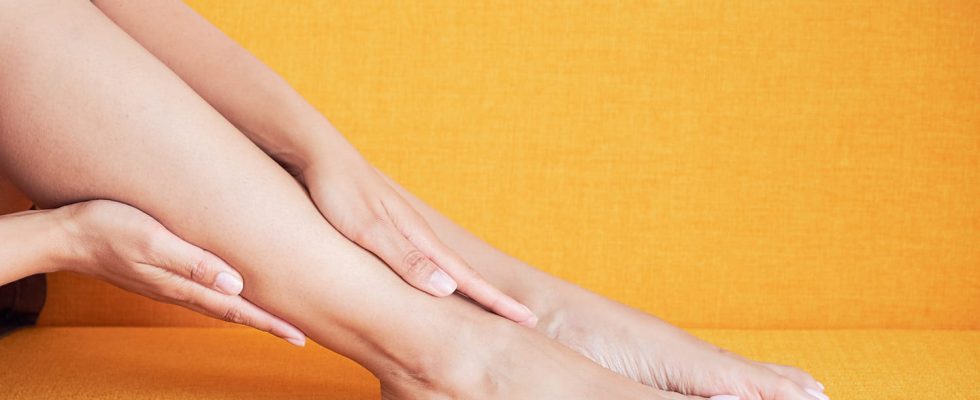Exercising when temperatures are high increases the risk of heat cramps. How to recognize them? What to do to avoid them? Practical advice with our expert.
Heat cramps are usually not serious because they go away on their own. They manifest themselves mainly in the legs and particularly in the calves but can also affect the upper limbs. Exercising in hot weather is part of risk factors. Definition, symptomsdiagnosis and treatments heat cramps with Dr. Ariel Toledano, vascular physician and phlebologist.
Definition: what is heat cramps?
Heat cramps are muscle cramps that occur when you make a physical effort, such as sports, when it is hot. “They are usually due to a dehydration and a lack of minerals. If you do not drink enough water and you eliminate excess minerals including sodium (heat and sport involve excessive sweating) then this deficit leads to a reaction at the level of the muscle which manifests itself by a violent contracture whose feeling is the crampe” explains Dr. Toledano.
What are the causes and risk factors?
A physical exertion combined with high heat causes heat cramp. “The people most at risk of suffering from heat cramps are sportyoutdoor manual occupations and those who do physical exercise when the temperature is too high, develops Dr. Toledano. “The more you exercise at high temperatures, the more you put yourself at risk of heat cramps.” A heat cramp is also linked to a dehydrationa mineral loss and excessive sweating due to excessive temperature. “Heat cramp is a alert“underlines our interlocutor.
Where are heat cramps located?
Heat cramps mainly affect the calves but can also be abdominal. “An individual who works his muscles at the level of the upper members is also exposed to heat cramps” when he plays sports, adds the vascular doctor and phlebologist.
What are the symptoms of a heat cramp?
Heat cramp manifests as a muscle contraction and an sudden calf pain for example, but also sometimes abs when you are in full physical effort. “You can see skin disorders like white spots which show a loss of water and minerals linked to excessive sweating. These spots occur on parts exposed to the sun, rather the face but alsoi arms if they are discovered” adds the doctor. In general, heat cramp appears during physical exertion, after a few minutes of exercise, or after the workout.
Can heat cramps happen at night?
“Cramps that occur at night are muscle cramps but are not heat cramps because they are not related to physical effort” answers our expert.
How to diagnose heat cramps?
The cramp is a muscle contracture, it does not last very long and resolves spontaneously most of the time therefore does not require a diagnosis. “If the pain and contracture are permanent, it is necessary to see a doctor” recommends the phlebologist.
What treatments for heat cramps?
“When a heat cramp occurs, it is necessary to immediately stretch the contracted muscle by massaging it to soothe this muscle contracture, get in the shade and stop physical activity” recommends Dr. Toledano.
“I also recommend giving mineral-enriched water, salt water and/or isotonic solutions to compensate for the dehydration” adds the expert. To prevent the risk of heat cramps, it is necessary to drink a lot of water. “I advise my patients toalternate water types which are enriched differently in minerals (calcium, magnesium, sodium etc), to eat calcium-rich dairy productsof the legumesof the whole starches rich in minerals and trace elements. You should also avoid physical activity when it is very hot.
Thanks to Dr. Ariel Toledanovascular doctor and phlebologist in Paris and author of the book “Take care of your legs” to be published in September by Editions du Cerf.
